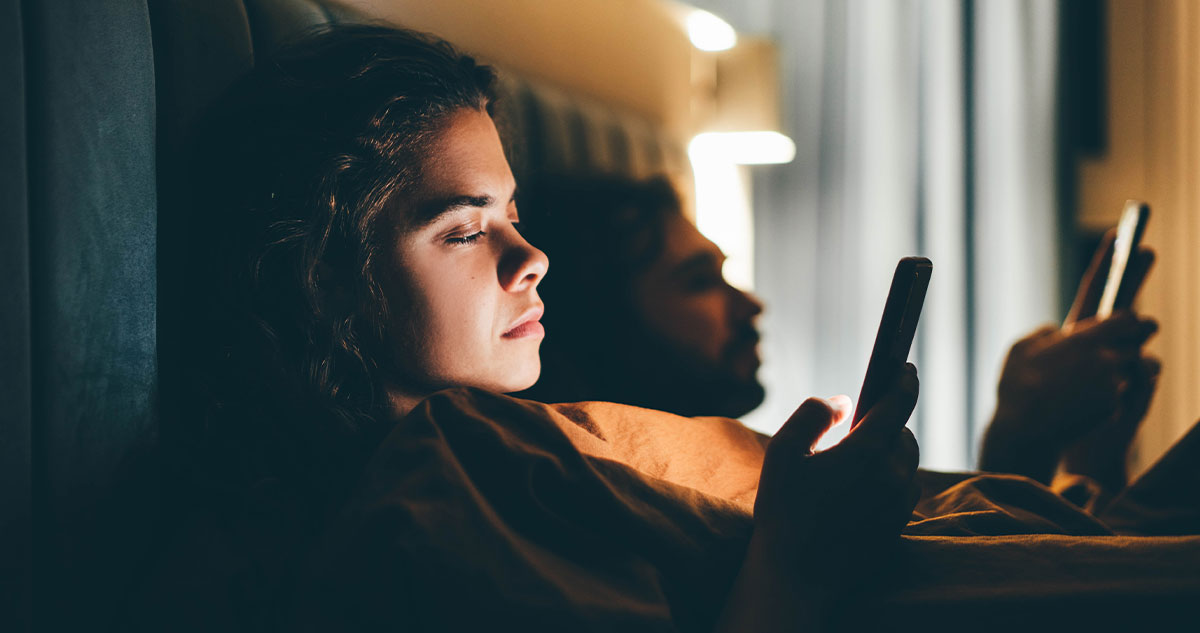
According to DataReportal’s Digital 2024 Global Overview Report, the average internet user spends almost seven hours online every day. We rely heavily on technology in our work, education and social interactions. It even helps us unwind after a long day by streaming our favorite TV shows and movies or reading a book or magazine article. However, it’s important to note that all that screen time, if not managed properly, can have a detrimental effect on our overall quality of life.
Taino Bendz, a published research collaborator and the author of Tech-Life Balance: 101 Ways to Thrive in a Digital World, says that overcoming those negative impacts is all about intention and awareness. An engineer by trade, Bendz understands and embraces the importance of digital technology in our society when balanced with other aspects of daily life. His work with technology has also given him a front-row seat to see how easily it can take over our lives and impact society.
Bendz defines successful tech-life balance as using technology in a way that doesn’t negatively affect personal life, relationships, health or focus. Relaxing with some Netflix in the evening is fine, but staying up binge-watching all night and sacrificing a good night’s sleep isn’t. Texting your friends is great, but doing so while driving is dangerous.
As a first step toward achieving tech-life balance, he encourages others to reflect on their technology usage and how it impacts them. Does watching Netflix at night really relax you, or is it just there to provide a dopamine kick?
Bendz’s book focuses on five key areas in which technology can negatively impact us: physical health, mental health, family, social life and productivity. For each area, Bendz provides several tips and hacks for managing or overcoming those adverse effects. While you’ll have to pick up a copy of Tech-Life Balance: 101 Ways to Thrive in a Digital World to learn all 101 ways, here are five first steps toward achieving a successful tech-life balance.
Mental health
Turn off unnecessary notifications
Research shows that mobile notifications significantly affect stress levels, cognitive control and attention spans, especially in children. Bendz says one of the easiest and most effective ways to have better tech-life balance is to turn off all unnecessary notifications on cell phones, wearable smart devices, laptops and any other device that might distract you. If you don’t constantly hear an alert or see a notification pop up, you’re less likely to reach for your phone and become distracted in the first place.
Using a physical alarm clock and creating a phone-free bedroom can drastically increase your sleep quality and help you start your day with less reliance on technology.
Invest in an alarm clock
Think about the first thing you do every morning. If you’re like most people, you reach over to silence your phone’s alarm. While doing so, you also likely swipe over to check your email, read some chat messages or scroll through social media before getting out of bed. You’re starting your day with screen time before you’ve had a chance to wipe the sleep from your eyes.
At the end of your day, you set your alarm on your phone before remembering to send that one last email or give social media a final scroll before bed. The next thing you know, you’re up later than you intended and can’t fall asleep because you just gave your brain a dopamine kick before bed.
Physical health
Be aware of your posture
One often overlooked adverse effect of technology is its impact on people’s physical health. The angle of our necks as we look down at our phones, our posture while working on a laptop from a cafe table, couch or desk and the amount of eye strain we experience when staring at a screen for too long all take a toll on our bodies over time. By making small changes, like using ergonomic aids or wearing blue light-blocking glasses, we can minimize those adverse physical effects.
Family and social life
Avoid “phubbing,” or phone snubbing
We’ve all had those moments when we’re hanging out with friends and we get lost in our phones. While it may seem harmless in the moment, and maybe even normal by societal standards, doing so affects the quality of our interactions and relationships with others.
Making a conscious effort to leave our phones in our pockets keeps us present and engaged with those around us. If you find yourself out with friends and notice that everyone is distracted by their phones, bring attention to the issue and suggest a phone-free activity instead.
Productivity
Use technology to your advantage
Technology itself can be a tool for combating our unhealthy technology habits. Bendz suggests using wearables like fitness trackers to remind you to get up and move around. He sets alarms that remind him to take breaks, breathe, go for a walk and otherwise disconnect for a bit. You can use apps that track your productivity but also force you to take breaks, like One Sec. Consider also setting timers or using apps to limit your phone usage.
Finally, use as much technology as you need to complete your work. Bendz fully acknowledges that our interview for this article wouldn’t have been possible without technology since he’s in Sweden and I’m in Minneapolis. However, he requested that our Google Meet be audio only so he could walk outside with his daughter while we spoke. We used technology to connect, but only as was absolutely necessary to get our work done.
Technology isn’t going anywhere. As artificial intelligence and virtual or augmented reality are integrated into more products, technology will inevitably become an even more significant part of our daily lives. But that doesn’t mean we need to let it take over our lives entirely. By making just a few small changes in how we use technology, we can achieve an optimal tech-life balance and digital well-being that keeps us in control.
This article originally appeared in the July issue of SUCCESS+ digital magazine. Photo by Mariia Korneeva/Shutterstock




